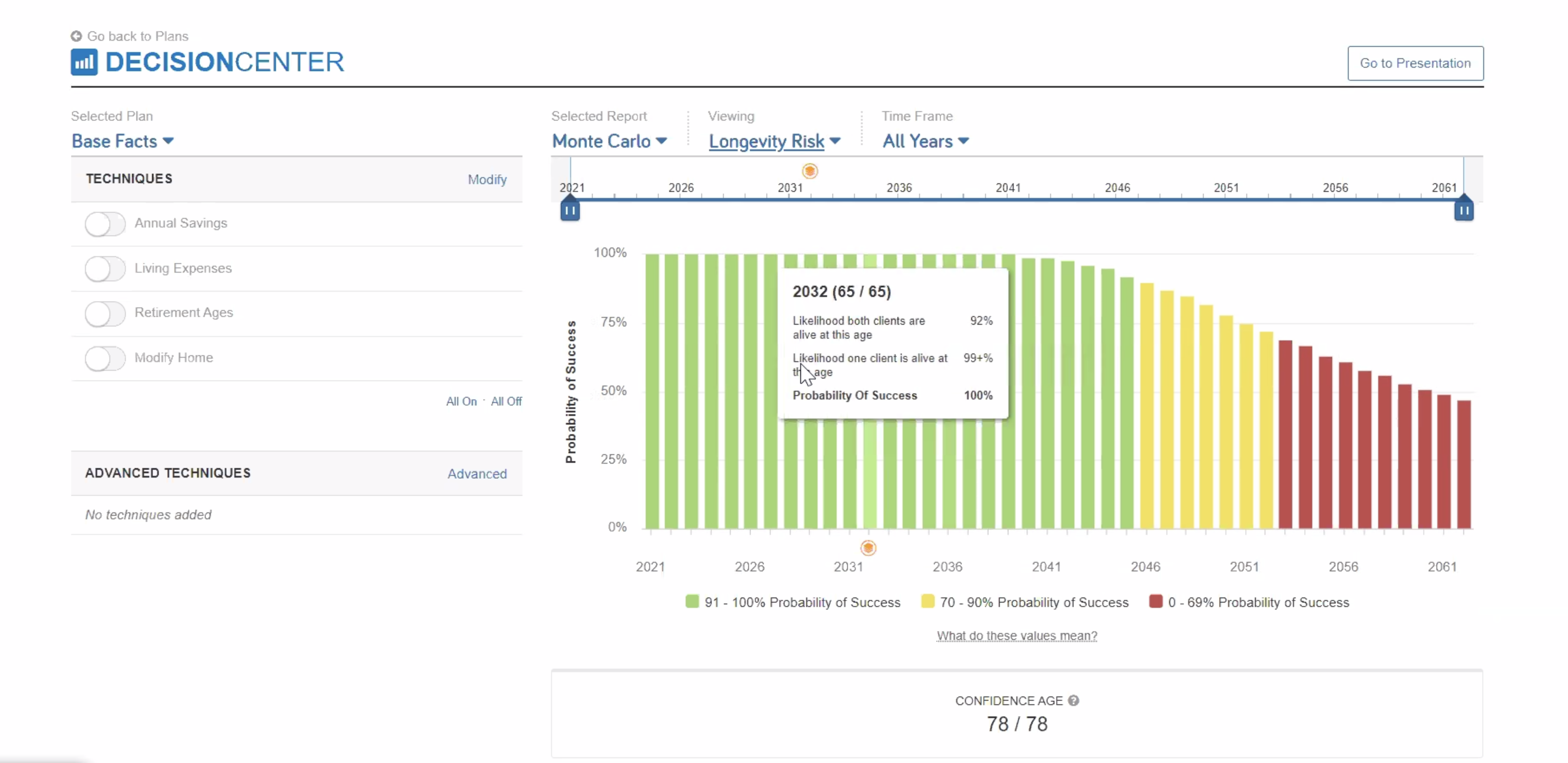The independent advice channel's two most dominant financial planning software providers each made announcements this week with one digging deeper into the decision-making process of borrowing money and refinancing, while the other is building more robust modeling for end-of-life cash flow.
On Monday, Envestnet | MoneyGuide announced the addition of two new financial planning modules, which it calls “blocks:" one pertaining to loan option considerations and the other the refinancing of current mortgage debt. Then on Wednesday eMoney Advisor rolled out a new use case, related to longevity risk, for its existing software, as well as a new metric, called “Confidence Age,” which helps advisors identify the precise age at which a client would see the success of his or her financial plan begin to dip below a preset threshold.
The latest MoneyGuide blocks, numbered 34 and 35, are called “Spend vs. Borrow” and “Mortgage Refinance." Spend vs. Borrow is a planning module to help clients decide between liquidating assets and taking out a loan. Loan options take into account interest rates and credit scores, but perhaps most important, the block “can open up opportunities for advisors to provide a loan referral and keep managed money with the firm,” according to the announcement. Firms using the block can embed their own product solutions. Envestnet also plans to eventually integrate certain planning modules with the Advisor Credit Exchange, the firm that powers the Envestnet Credit Exchange.
The Mortgage Refinance block is meant to helps client analyze whether current interest rates and other factors support refinancing of a mortgage. Similar to Spend vs. Borrow, this block can also “lead to new lending opportunities,” according to the announcement. “The timing is just right for our latest blocks to further enhance these types of meaningful conversations that advisors are having with clients,” said Tony Leal, president of MoneyGuide, in a statement.
eMoney tackles Longevity Risk and Introduces New Metric
Meanwhile, eMoney is adding features designed to give their clients peace of mind when it comes to the fear of outliving their assets. A feature called “Longevity Risk Analysis” helps prepare clients for a longer-than-expected retirement. In essence, the product improvement uses actuarial data to spark conversations about the strength of a client's financial plan, over a broad stretch of years. The “interactive experience” is designed to “facilitate critical conversations” and “educate advisors and clients on the often-surprising life expectancy statistics,” according to the announcement.
Alongside the new feature, eMoney invested in and developed a new metric, called “Confidence Age.” The metric provides advisors with a specific age at which the probability of success of a financial plan falls below a customizable threshold. The announcement cites an example where the advisor wants to provide a plan with a greater than an 85% chance of success. The Confidence Age is the last age at which the success rate remains at 85% or more.

“There is confusion over a Monte Carlo score, so that’s why we have the confidence score and confidence age,” said Matt Rogers, director of financial planning at eMoney. He pointed to the 75th percentile in a simulation as an example of one that clients think is low, but it’s actually “pretty good.”
Instead, advisors will now be able to point to ages, instead of percentiles. “People get ages; rather than percentiles,” he added. “It’s a better context than a percentile-based one.”
Both MoneyGuide and eMoney’s improvements are now available to advisors using their platforms.





